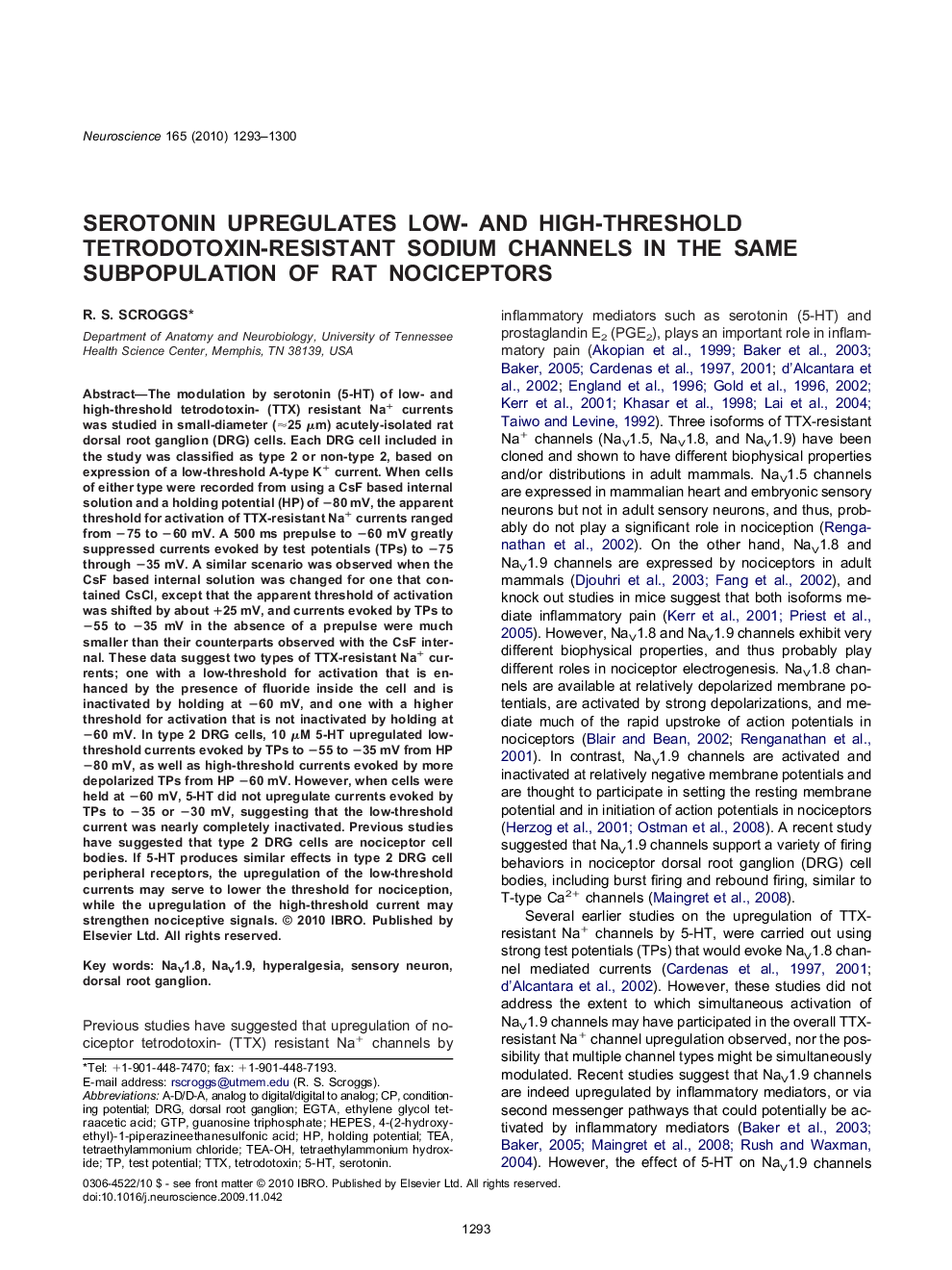| Article ID | Journal | Published Year | Pages | File Type |
|---|---|---|---|---|
| 6277321 | Neuroscience | 2010 | 8 Pages |
Abstract
The modulation by serotonin (5-HT) of low- and high-threshold tetrodotoxin- (TTX) resistant Na+ currents was studied in small-diameter (â25 μm) acutely-isolated rat dorsal root ganglion (DRG) cells. Each DRG cell included in the study was classified as type 2 or non-type 2, based on expression of a low-threshold A-type K+ current. When cells of either type were recorded from using a CsF based internal solution and a holding potential (HP) of â80 mV, the apparent threshold for activation of TTX-resistant Na+ currents ranged from â75 to â60 mV. A 500 ms prepulse to â60 mV greatly suppressed currents evoked by test potentials (TPs) to â75 through â35 mV. A similar scenario was observed when the CsF based internal solution was changed for one that contained CsCl, except that the apparent threshold of activation was shifted by about +25 mV, and currents evoked by TPs to â55 to â35 mV in the absence of a prepulse were much smaller than their counterparts observed with the CsF internal. These data suggest two types of TTX-resistant Na+ currents; one with a low-threshold for activation that is enhanced by the presence of fluoride inside the cell and is inactivated by holding at â60 mV, and one with a higher threshold for activation that is not inactivated by holding at â60 mV. In type 2 DRG cells, 10 μM 5-HT upregulated low-threshold currents evoked by TPs to â55 to â35 mV from HP â80 mV, as well as high-threshold currents evoked by more depolarized TPs from HP â60 mV. However, when cells were held at â60 mV, 5-HT did not upregulate currents evoked by TPs to â35 or â30 mV, suggesting that the low-threshold current was nearly completely inactivated. Previous studies have suggested that type 2 DRG cells are nociceptor cell bodies. If 5-HT produces similar effects in type 2 DRG cell peripheral receptors, the upregulation of the low-threshold currents may serve to lower the threshold for nociception, while the upregulation of the high-threshold current may strengthen nociceptive signals.
Keywords
Related Topics
Life Sciences
Neuroscience
Neuroscience (General)
Authors
R.S. Scroggs,
